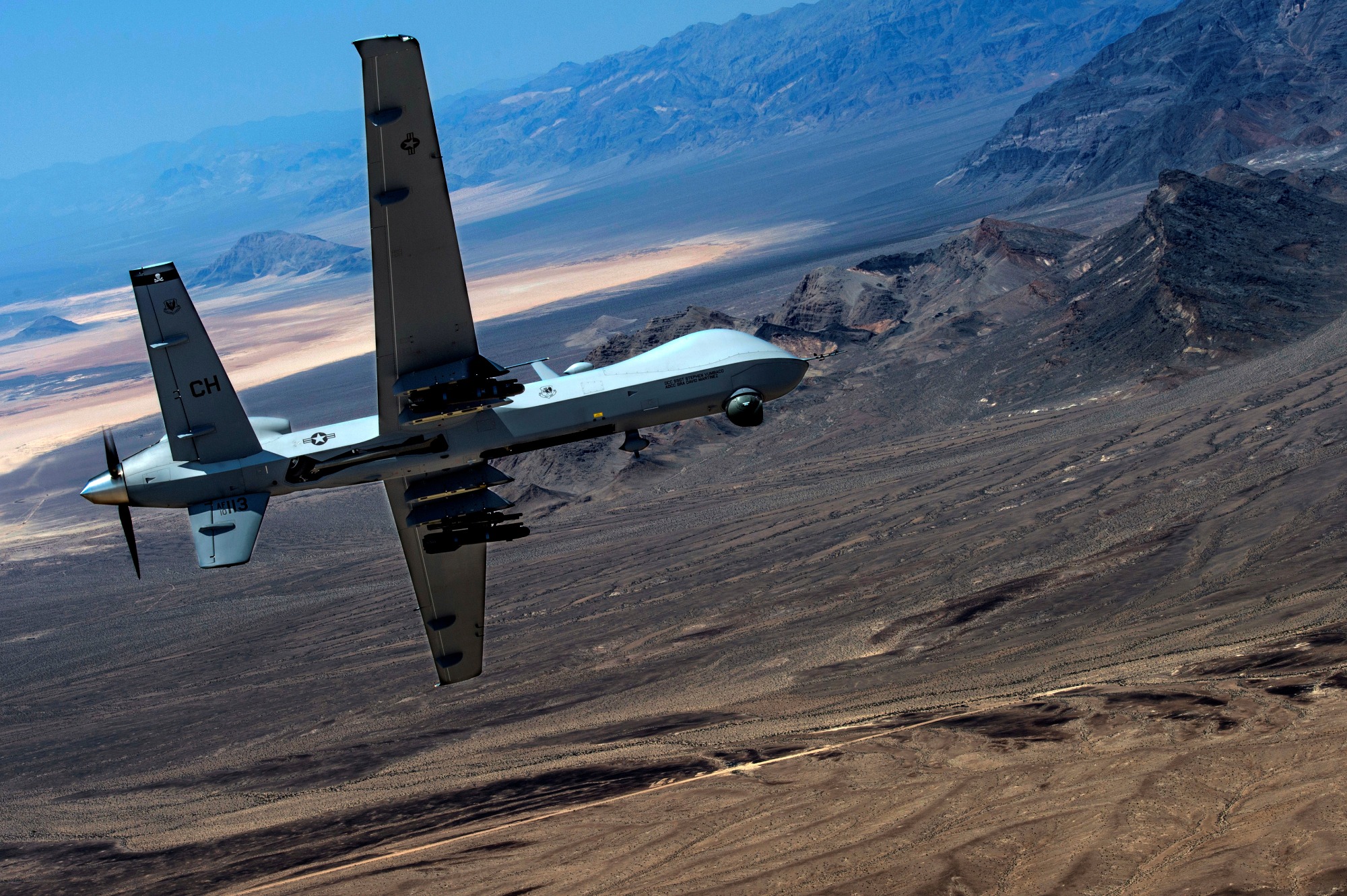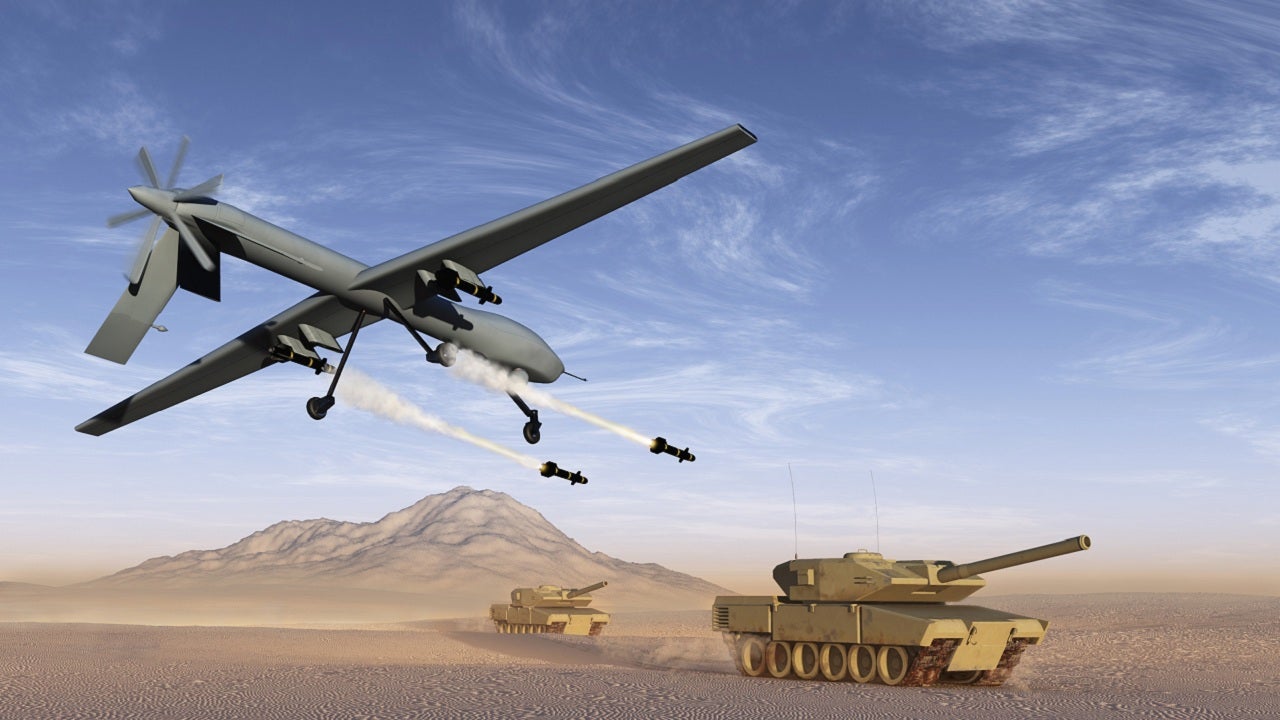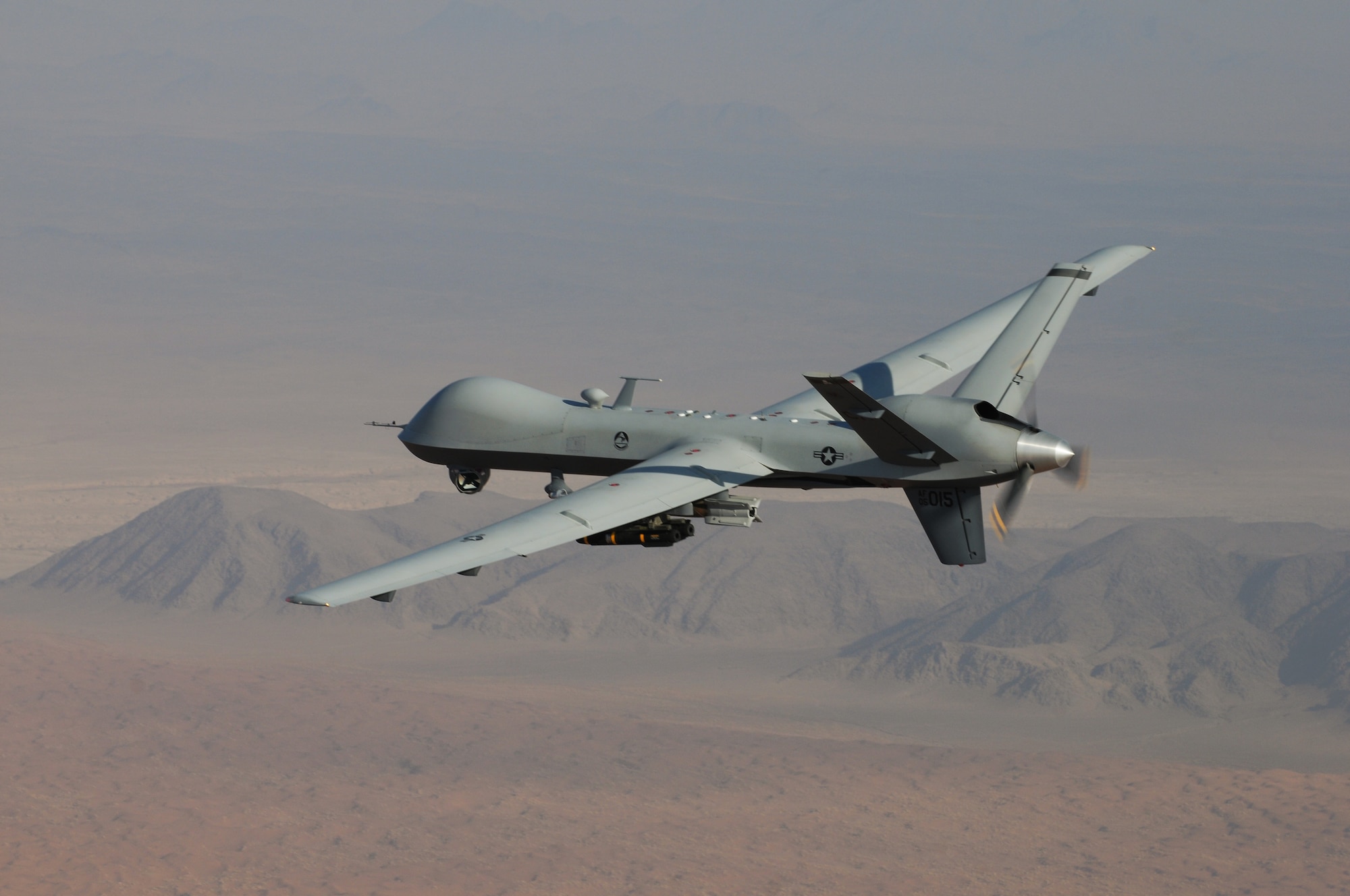Military Drone Range - Military Technology lists Russia's top five long-range attack drones. Image courtesy of Esteban De Armas/Shutterstock.
Russia is accelerating the development of several long-range attack UAVs to compete with the United States and China, which lead the combat drone race.
Military Drone Range

At the heart of the humanitarian crisis, a Russian invasion of Ukraine risks adding materiality to the existing global economic and supply challenges. We are moving into an era where geopolitics will become a regular part of council discussions. In recent developments, Russian companies have taken significant steps around the globe to provide countries with equipment in various aerospace, defense and defense sectors. This means that countries dependent on Russian weapons have to review all purchases and clauses related to their programs and payments for their defense calculations. Download Global Data's 5
General Atomics Mq 1 Predator
Read more about the Executive Summary of the Conflict in Ukraine. This report is part of an ongoing series, updated every month with the latest data and analysis, as the conflict evolves and has broad implications in all sectors. Access the latest macroeconomic forecasts, charts with the latest data and our updated Sector Scorecards to reflect our updated Sanctions Monitoring, as well as current views on the impact of the crisis at the level of the company.
Military Technology lists the top five Russian long-range attack drones based on their technical specifications.
The S-70 Okhotnik-B (Hunter) is a stealth fighter drone developed by Sukhoi Design Bureau and Russian Aircraft Corporation MiG. The drone made its first flight in August 2019. The unmanned aerial vehicle (UCAV) is expected to be delivered to the Russian Armed Forces in 2024.
Expected to serve as a "loyal wingman," the stealth drone incorporates a flying wing design, while its composite fuselage is covered in radar-absorbing paint. It is designed to provide a low radar cross section. Powered by an AL-31 turbojet engine, the UCAV can be fitted with electro-optical targeting, communications and reconnaissance payloads.
The Navy Needs More Long Range Drones To Support Its Long Range Missiles
With a maximum take-off weight of 20t, the Okhotnik-B combat drone is significantly larger than its Western counterparts, the Dassault nEUROn and the Northrop Grumman X-47B. The Hunter UCAV has a length and wingspan of 14m and 20m respectively.
The attack drone has two internal weapons bays including 2,000 kg of guided and unguided munitions, air-to-air missiles and bombs. It is expected to fly at a speed of 1,000 km per hour and reach a maximum distance of 6,000 km.
Chrome (Thunder) is a new stealth combat drone designed by Kronstadt. A mock-up of the UAV was presented during the Military-2020 fair in Moscow in August 2020. The Thunder UCAV is intended to work alongside Su-35 and Su-57 fighter jets to provide reconnaissance data. Fire missiles while receiving commands from a manned jet.
With its dorsal entry and V-shaped tail, it bears a striking resemblance to Russia's long-range attack drone Kratos XQ-58 Valkyrie stealth unmanned aerial vehicle. The Chrome War UAV is 13.8m long and 3.8m high, with a wingspan of 10m.
Turkey Starts Mass Production Of Miniature Drone Missile
The drone has a maximum weight of 7t and can carry a maximum load of 2,000 kg. It has four hard points, including two under the wing consoles and two in the fuselage. It can carry Izdeliye 85, KAB-250-LG-E, KAB-500S-E and X-38MLE ammunition.
The stealth drone can fly at a speed of 800 km/h and reach a maximum height of 12,000 m. Its maximum speed is about 1000 km / h, while the combat radius of the UAV is 700 km.
The Altius-U Medium Altitude Long Endurance (MALE) drone carries a combat payload of 2,000 kg. Image courtesy of Geektrooper2.
The Altius-U Medium Altitude Long Endurance (MALE) drone is manufactured by the Ural Civil Aviation Plant (UZGA). The drone's attack and reconnaissance capabilities are believed to be comparable to those of the RQ-9 Reaper and RQ-4 Global Hawk UAVs.
Marines Are Testing Drones That Fly From Grenade Launchers
The UAV Altius-U MALE made its first flight in August 2019. It flew autonomously for 32 minutes at a maximum altitude of 800 m. The drone is expected to perform reconnaissance, attack and electronic attack missions for the Russian Air Force and Navy.
The fixed-wing design of the unmanned aerial vehicle includes a large high wing, a V-tail structure and a three-legged retractable landing gear. Built with composite materials, Altius is powered by two new VK-800C turboprop engines developed by Klimov Design Bureau.
The 7t drone can carry a 2t combat load, including a family of Grom 9-A-7759 gliding bombs that can hit targets up to 120 km away. The drone can target radars, missiles and air defense units, and land-based cruise missiles to support low-intensity conflict and counter-terrorism operations.

The Sirius MALE attack UAV was presented at the Army-2020 exhibition in August 2020. Image courtesy of KVN1777/Shutterstock.
Us Military's Vertical Lift Plans Necessitate More Advanced Drones
The Sirius medium-altitude long-endurance (MALE) attack UAV from Kronstadt is said to be the largest Russian drone with a wingspan of 30m. It is intended to support surveillance missions in the Arctic and Pacific regions and in the Russian Exclusive Economic Zone (EEZ).
A full-scale mock-up of the 5t drone was unveiled for the first time at the MAKS-2019 International Aviation and Space Exhibition held at Zhukovsky International Airport near Moscow, Russia. It was also presented at the International Military Technology Forum of the Army-2020 held in August 2020.
The long-range surveillance and attack drone is 9m long and 3.3m high. It will also have a satellite communications complex, which will allow it to carry out long-range reconnaissance and combat missions.
The drone will be able to carry a maximum payload of 450 kg, allowing it to carry guided bombs or air-to-ground missiles. It travels at a speed of 295 km/h and flies at an altitude of 12,000 m. The endurance of Sirius UAV with full charge is 40 hours.
U.s. Drone Maker Skydio Wins Production Other Transaction Agreement (ota) For U.s. Army Short Range Reconnaissance Program
The Orion is a medium altitude combat UAV developed by Kronstadt, part of the JSFC System. Kronstadt showed the Orion drone with a full range of weapons during the Army-2020 defense exhibition in August 2020.
The fixed wing design of the Orion drone incorporates V-shaped tail fins. The drone is made of carbon plastic composite material to reduce weight. It is equipped with an electric impulse anti-icing system for low temperature operation.
The drone can carry four guided bombs or four missiles, including KAB-50 bombs and UPAB-50S 50kg guided munitions. The UPAB-50S missile can hit personnel and material at a maximum distance of 30 km. It can be combined with high-explosive fragmentation (HE), cluster and fuel-air explosive warheads. The combat UAV has been fitted with a new weapons guidance system.

The UAV Orion has a maximum speed of 200 km/h, while its maximum flight time with a fixed load is 24 hours. Orion-E, the export version, has a maximum payload of 1,000 kg and can carry a payload of 200 kg, including four 50 kg or two 100 kg munitions.
Hellfire Missile With Roughly Three Times More Range Tested By Mq 9
Global Mergers and Acquisitions (M&A) Deals in the Aerospace, Defense and Defense Industry, Q2 2021 - Top Topics - Topic search "Predator Drone" and "Predator Aircraft" redirects here. For other drones, see Predator B and Predator C. For other uses, see Predator (disambiguation).
) is an American remotely piloted aircraft (RPA) built by General Atomics, used primarily by the United States Air Force (USAF) and the Central Intelligence Agency (CIA). Developed in the early 1990s for aerial reconnaissance and forward surveillance roles, the Predator is equipped with cameras and other ssors. It has been modified and upgraded to carry and fire two AGM-114 Hellfire missiles or other munitions. The aircraft entered service in 1995, and saw combat in Afghanistan, Pakistan, NATO intervention in Bosnia, 1999 NATO bombing of Yugoslavia, Iraq War, Yemen, 2011 Libyan Civil War, intervention 2014 in Syria and fighting in Somalia. .
The USAF describes the Predator as a "Tier II" MALE UAS (medium-altitude, long-endurance unmanned aerial system). A UAS consists of four aircraft or "air vehicles", a ground control station (GCS) and a primary satellite link communications suite.
Powered by a Rotax engine and powered by a single propeller, the air vehicle flies up to 400 nmi (460 mi; 740 km) to a target, stops for 14 hours and returns to its base.
Novadem Extends Its Nx Range With A New Drone, The Nx160
The RQ-1 Predator was the primary long-range aircraft used by the USAF and the CIA for strike operations in the Afghan and Pakistani tribal areas from 2001 until the introduction of the MQ-9 Reaper; It was also used elsewhere. Aggressive uses of the Predator in the United States Classified by , US military officials have praised the RPA for its reconnaissance and intelligence-gathering capabilities, but have refused to publicly discuss its offensive capabilities.
Civilian uses for drones include border patrol and scientific survey and monitoring of wind direction and other features of large wildfires (such as the drone used by the California Air National Guard in the Rim Fire of August 2013).
A Predator flies a simulated naval aerial reconnaissance flight off the coast of Southern California on December 5, 1995.

The Central Intelligence Agency (CIA) and the Pentagon began experimenting with unmanned surveillance aircraft (drones) in the early 1980s. The CIA wants small, light and unobtrusive drones
A New Type Of Drone, Neither Military Nor Civilian, Is Emerging
Military drone range, laser range finder military, military range bags, military range targets, long range military radio, military radio range, military range finder, military long range binoculars, range rover military discount, military range rover, range of military drones, military range bag

0 Comments